Today Current Affairs: 15th October 2021 for UPSC IAS exams, State PSC exams, SSC CGL, State SSC, RRB, Railways, Banking Exam & IBPS, etc
Table of Contents
Kunming Declaration On Biodiversity:

The Kunming Declaration was adopted by over 100 countries at the ongoing 15th Conference of the Parties to the United Nations Convention on Biological Diversity in china.
- The adoption of the declaration will create momentum for a new global biodiversity pact.
- In a previous agreement, Strategic Plan for Biodiversity 2011-2020, signed in Aichi, Japan, in 2010, governments agreed on 20 targets to try to slow biodiversity loss and protect habitats by 2020.
- It calls for urgent and integrated action to reflect biodiversity considerations in all sectors of the global economy but crucial issues – like funding conservation in poorer countries and committing to biodiversity-friendly supply chains have been left to discuss later.
- It is not a binding international agreement.
- It calls upon the parties to mainstream biodiversity protection in decision-making and recognise the importance of conservation in protecting human health.
- The theme of the declaration is Ecological Civilization: Building a Shared Future for All Life on Earth.
- By adopting this, the nations have committed themselves to support the development, adoption and implementation of an effective post-2020 implementation plan, a capacity building action plan for the Cartagena Protocol on biosafety.
- The Protocol seeks to protect biological diversity from the potential risks posed by living modified organisms resulting from modern biotechnology.
- As per the declaration the signatory nations will ensure that the post-pandemic recovery policies, programmes and plans contribute to the conservation and sustainable use of biodiversity, promoting sustainable and inclusive development.
30 by 30 Target:
- The declaration made a reference to the ’30 by 30′ target which is a key proposal being debated at the COP15, that would afford 30% of the Earth’s land and oceans protected status by 2030.
- Apart from this, the goal to halve the use of chemicals in agriculture and stop creating plastic waste is also being debated.
Kunming Biodiversity Fund
- China has also pledged to inject USD 233 million into a new fund to protect biodiversity in developing countries. The fund is being referred to by China as Kunming Biodiversity Fund.
- It is the right step in this direction. However, some countries have reservations regarding this fund.
- Some countries have called this fund as “a drop in the bucket” given that China is the world’s biggest polluter.
- Further, some rich country donors say a new fund for conservation is unnecessary because the United Nations’ Global Environment Facility already helps developing nations finance green projects.
PM Gati Shakti Scheme:

The government of India has launched the ambitious Gati Shakti scheme or National Master Plan for multi-modal connectivity plan, with the aim of coordinated planning and execution of infrastructure projects to bring down logistics costs.
About the Scheme
- Aim: To ensure integrated planning and implementation of infrastructure projects in the next four years, with focus on expediting works on the ground, saving costs and creating jobs.
- The Gati Shakti scheme will subsume the Rs 110 lakh crore National Infrastructure Pipeline that was launched in 2019.
- Besides cutting logistics costs, the scheme is also aimed at increasing cargo handling capacity and reducing the turnaround time at ports to boost trade.
- It also aims to have 11 industrial corridors and two new defence corridors – one in Tamil Nadu and other in Uttar Pradesh. Extending 4G connectivity to all villages is another aim. Adding 17,000 kms to the gas pipeline network is being planned.
- It will help in fulfilling the ambitious targets set by the government for 2024-25, including expanding the length of the national highway network to 2 lakh kms, creation of more than 200 new airports, heliports and water aerodromes.
- Integrated Approach: It intends to bring together 16 infrastructure related Ministries.
- This will help in removing long-standing issues such as disjointed planning, lack of standardisation, problems with clearances, and timely creation and utilisation of infrastructure capacities.
- Gati Shakti Digital Platform: It involves the creation of a common umbrella platform through which infrastructure projects can be planned and implemented in an efficacious manner by way of coordination between various ministries/departments on a real-time basis.
Climate Resilience Information System And Planning (CRISP-M) Tool:
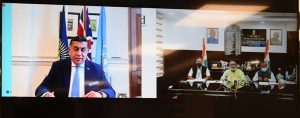
Union Minister of Rural Development & Panchayati Raj jointly launched Climate Resilience Information System and Planning (CRISP-M) tool for integration of climate information in Geographic Information System (GIS) based watershed planning under Mahatma Gandhi NREGA
- The CRISP-M tool will help embed climate information in the GIS based planning and implementation of Mahatma Gandhi NREGS.
- This tool will be used in seven states where in the Foreign Commonwealth and Development Office (FCDO), Government of UK and Ministry of Rural Development, Government of India are jointly working towards climate resilience.
- The states are Bihar, Jharkhand, Uttar Pradesh, Madhya Pradesh, Chhattisgarh, Odisha and Rajasthan.
Unity Small Finance Bank:
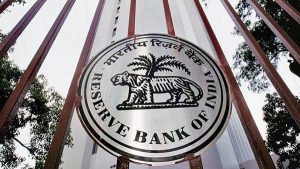
The Reserve Bank of India issued a small finance bank (SFB) licence to a consortium of fintech company BharatPe and Centrum Financial Services Ltd.
- The new business entity “Unity Small Finance Bank” will see Centrum’s MSME and micro finance businesses merged into itself.
- In a statement, Centrum Group’s Executive Chairman Jaspal Bindra said: “We aspire to be India’s first Digital Bank”.
- This sheds light on the need for traditional lenders to expand their digital infrastructure in order to address the market’s requirement for digital products.
- There have been several examples of small finance banks and non-banking financial companies collaborating with fintech companies to access and monetise the data collected by these consumer tech firms.
- This has particularly gained momentum in the buy-now-pay-later (BNPL) and the micro-lending models, where companies like Paytm, Google Pay, Amazon Pay, etc have partnered with NBFCs to assess creditworthiness of an existing customer and present it to the lender as a potential borrower.
India’s Thermal Power Plants:

The Prime Minister’s Office reviewed the coal stock situation in India’s thermal power plants.
- India’s thermal power plants currently have an average of four days worth of coal stock against a recommended level of 15-30 days, with a number of states highlighting concerns about blackouts as a result of the coal shortage.
- Coal and lignite fired thermal power plants account for about 54 per cent of India’s installed power generation capacity but currently account for about 70 per cent of power generated in the country.
- Purchase bids on the Day Ahead Market (DAM) on the India Energy Exchange (IEX) on October 12 were for 430,778 MWh (Megawatt-hours) up from 174,373 MWh a month ago.
- The shortage in coal is a result of a sharp uptick in power demand as the economy recovered from the effects of the pandemic.
- A sharp increase in the international prices of coal due to a shortage in China and low accumulation of stock by thermal power plants in the April-June period have also contributed to the coal shortage.
- Heavy rains in coal bearing areas in September had also led to a slowdown in the supply of coal to thermal plants.
- The power ministry has also permitted power generators using local coal to use upto a 10 per cent blend of imported coal to boost coal stocks.
Asset Ownership:

An analysis of asset ownership data at the household level collected by Lokniti-CSDS during its National Election Study in 2019 was recently released.
- Gauging who can afford the five assets of a car, an air-conditioner at home, a desktop or laptop computer, a refrigerator, and a television set, has been seen as an important indicator of economic well-being in a fast-growing, aspirational economy.
- An analysis of asset ownership data at the household level collected by Lokniti-CSDS during its National Election Study in 2019 indicates that no more than 3% of Indian households — that is, 1 in every 33 — own all of these five assets at the same time.
- The pace of growth of ownership of these assets has been unexceptional in recent years — five years previously, in 2014, the percentage of households that owned these assets was 2%, or 1 in every 50 households.
- The data show major differences in asset ownership among the various social groups. Thus, upper-caste Hindu households are seven times more likely to own all the five assets, compared to Dalit (SC) and Muslim households.
- Among religious groups, Sikh households were found to be the most prosperous.
- The pattern of asset-ownership varies significantly with how urban the area is. As against about 13% of households in cities, only 5% of households in towns, and merely 1% in villages, could boast of having all of the five assets in 2019.
- The highly urbanised or high per-capita-income states of Delhi, Punjab, Goa, and Kerala, in that order, emerged at the top of the table in this regard.
Border Security Force (BSF):

Such operational powers to the BSF, a Central Armed Police Force under the Union, will also be applicable to the newly created Union Territories of Jammu and Kashmir and Ladakh, according to a notification published in the Gazette of India on October 11.
- Earlier, the BSF’s limit was fixed up to 80 km from the international boundary in Gujarat and 15 km in Rajasthan, Punjab, West Bengal and Assam.
- The October 11 notification replaces a 2014 order under the BSF Act, 1968, which also covered the States of Manipur, Mizoram, Tripura, Nagaland and Meghalaya.
- The violations for which the BSF carries out search and seizure include smuggling of narcotics, other prohibited items, illegal entry of foreigners and offences punishable under any other Central Act among others.
- The amendment “establishes uniformity in defining the area within which the BSF can operate” as per its charter of duties, adding that this would enable improved operational effectiveness in curbing trans-border crimes.
- After a suspect has been detained or a consignment seized within the specified area, the BSF can only conduct “preliminary questioning” and has to hand over the suspect to the local police within 24 hours. The BSF does not have the powers to prosecute crime suspects.
- Punjab Chief Minister Charanjit Singh Channi criticised the move as an attack on federalism, and sought a rollback of the decision.
Draft Regional Plan 2041:
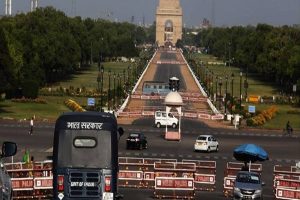
The National Capital Region Planning Board (NCRPB) has recently approved the ‘Draft Regional Plan 2041’ according to which the National Capital Region (NCR) is likely to reduce in size.
- NCRPB was set up in 1985, to promote balanced development of the NCR and to avoid haphazard development
- The geographical size of the region will be a contiguous circular region of 100km radius from Rajghat (Delhi). The area in the 100km radius can be developed as a core area.
- NCR is a region envisaged in 1985 for coordinated urban development in and around Delhi.
- Beyond 100 km radius and up to the existing NCR boundary, all notified cities/towns along with a corridor of one km on either side of connecting expressways/national highways/state highways/Regional Rapid Transit System will be included.
- Currently, the NCR consists of 24 districts in Uttar Pradesh, Haryana and Rajasthan and entire Delhi, spread across an area of 55,083 square kilometres.
- The name of natural conservation zones, as introduced in the Regional Plan-2021 will be changed to “natural zones” in the upcoming Regional Plan-2041.
- States will be empowered to decide whether tehsils that fall partly inside the NCR boundary should remain in it or not.
- The DRP 2041 Plan will pave the way for a future-ready, slum-free National Capital Region with an air ambulance facility and high-speed connectivity through helitaxis, road, rail, and inland waterways.
- The Plan proposes to explore the feasibility of a 30-minute Mass Transit Rail System (MTRS) from the nearest NCR boundaries to Delhi.
- If implemented, parts of Panipat in Haryana and Muzaffarnagar in Uttar Pradesh will be dropped from the new NCR map.
- The idea is to have a compact area so that the development can be planned in a better manner.
- It will benefit the rural areas, as the state governments can plan for their development in a better manner.
Global Climate Risk Index 2021:
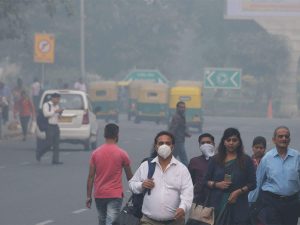
The international environmental think tank ‘Germanwatch’ released the Global Climate Risk Index 2021.
- This is the 16th Edition of the Index. It is published annually.
- Germanwatch, based in Bonn and Berlin (Germany), is an independent development and environmental organisation which works for sustainable global development.
- The Index analyses the extent to which countries and regions have been affected by the impacts of weather-related loss events (storms, floods, heat waves etc.).
- The impact is calculated in terms of fatalities and economic losses, both.
- The most recent data available for 2019 and from 2000 to 2019 were taken into account.
- The 2021 Index does not include data from United States of America.
- The Climate Risk Index clearly signals that repercussions of escalating climate change can no longer be ignored, on any continent or in any region.
- Impacts from extreme-weather events hit the poorest countries hardest as these are particularly vulnerable to the damaging effects of a hazard, have a lower coping capacity and may need more time to rebuild and recover.
- High-income countries are also getting severely impacted by climate change.
About 2021 Findings
- Mozambique, Zimbabwe as well as the Bahamas were the most affected countries in 2019.
- For the period from 2000 to 2019, Puerto Rico, Myanmar and Haiti rank highest.
- Storms and their direct implications- precipitation, floods and landslides, were one major cause of losses and damages in 2019.
- Of the ten most affected countries in 2019, six were hit by tropical cyclones. Recent science suggests that the number of severe tropical cyclones will increase with every tenth of a degree in global average temperature rise.
- Eight out of the ten countries most affected by the quantified impacts of extreme weather events in 2019 belong to the low- to lower-middle income category. Half of them are Least Developed Countries.
- India has improved its rankings from last year. It is ranked 7th in the 2021 Index as compared to 5th in 2020 Index.
- The Indian monsoon lasted a month longer than usual in the year 2019, with surplus rains causing major hardship.The rain was 110% of normal, which is the most since 1994.
- The floods caused by heavy rains were responsible for 1800 deaths and led to displacement of 1.8 million people.
- Overall, 11.8 million people were affected by the intense monsoon season and the economic damage caused was estimated to be US$ 10 billion.
- India was hit by a total of 8 tropical cyclones. Of which, Cyclone Fani (May, 2019) caused the maximum damage.
- The Himalayan glaciers, the coastlines, and the deserts in India have been severely affected by global warming.
- The Report also points to an increase in the number of heat waves, increased intensity and frequency of cyclones and an increased rate of melting of glaciers in India.
Silicosis:

In India, countless workers engaged in mines, construction and factories are silently dying of exposure to dust. This is better referred to as silicosis.
- Silicosis can be described as an occupational disease or hazard due to dust exposure. It is incurable and can cause permanent disability.
However, it is totally preventable by available control measures and technology.
About Silicosis
- Silicosis occurs most commonly in people working in the quarrying, manufacturing, and building construction industries.
- Silica (SiO2/silicon dioxide) is a crystal-like mineral found in abundance in sand, rock, and quartz.
- It is a progressive lung disease caused by the inhalation of silica over a long period of time, characterized by shortness of breath, cough, fever and bluish skin.
- It is one of the most prevalent occupational health illnesses in the world. It is also reported from the population with non-occupational exposure to silica dust from industrial as well as non-industrial sources.
- Exposure to large amounts of free silica may not be noticed because silica is odourless, non-irritant and does not cause any immediate health effects, but long-term exposure is associated with pneumoconiosis, lung cancer, pulmonary tuberculosis, and other lung diseases.
- Pneumoconiosis is one of a group of interstitial lung diseases caused by breathing in certain kinds of dust particles that damage your lungs.
- Diagnosis is a challenge because it is difficult to even find out if a person has tuberculosis or silicosis.
- The nodules that collect to form a mass can take up to 20 years to be identified in chest x-rays and the victim notices symptoms only after many years of exposure to silica.
- Grossly, silicotic nodules are firm, discrete, rounded lesions that contain a variable amount of black pigment.
- The nodules tend to occur around respiratory bronchioles and small pulmonary arteries.
- In India silicosis is prevalent in Gujarat, Rajasthan, Pondicherry, Haryana, Uttar Pradesh, Bihar, Chhattisgarh, Jharkhand, Orissa and West Bengal among the workers of construction and mining.
6th Ministerial (2021) Meeting Of The Conference On Interaction And Confidence-Building Measures (CICA):
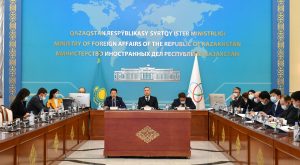
The External Affairs Minister addressed the 6th Ministerial (2021) meeting of the Conference on Interaction and Confidence-Building Measures (CICA) in Nur-Sultan, Kazakhstan.
- Last year, Kazakhstan assumed the chairmanship of CICA.
- The 5th Meeting of the Ministers of Foreign Affairs of the CICA was held in Beijing in the year 2016
- India’s internationalism (Vasudhaiva Kutumbakam) drives its Vaccine Maitri.
- In January 2021, India launched the Vaccine Maitri (Vaccine Friendship) initiative – a major diplomatic effort to gift and supply made-in-India vaccines to low-income and developing countries globally.
- Advised the forum to strengthen collective resolve to tackle terrorism, arms trafficking, narcotics trade, and other forms of trans-national crimes.
- Asia especially, but also Africa and Latin America, are inadequately represented in United Nations’ (UN) decision-making.
- The limitations of the multilateral response to the Covid pandemic were starkly evident. This only makes a case for reformed multilateralism more urgent with each passing day.
- India underscored the importance of the Taliban regime meeting the expectations of the international community as elaborated in the UN Security Council Resolution 2593.
- The UNSC resolution 2593 unequivocally demands that Afghan territory not be used for sheltering, training, planning or financing terrorist acts; and specifically refers to terrorist individuals proscribed by the UN Security Council, including Lashkar-e-Taiba and Jaish-e-Mohammad.
- Connectivity must respect the most basic principle of international relations-respect for sovereignty and territorial integrity.
- An apparent reference to India’s objection to China’s ambitious infrastructure development plans in Pakistan under the China-Pakistan Economic Corridor (CPEC).
- CPEC, which connects Gwadar Port in Balochistan with China’s Xinjiang province, is the flagship project of Chinese President Xi Jinping’s ambitious Belt and Road Initiative (BRI).
- India has protested to China over the CPEC as it is being laid through PoK.
About CICA
- The CICA is an intergovernmental forum aimed at strengthening regional cooperation and ensuring peace, security, and stability in Asia.
- The idea of creating the organization was first voiced by Kazakhstan’s First President Nursultan Nazarbayev in 1992 at the 47th session of the United Nations General Assembly, while the first CICA summit was held in June of 2002.




